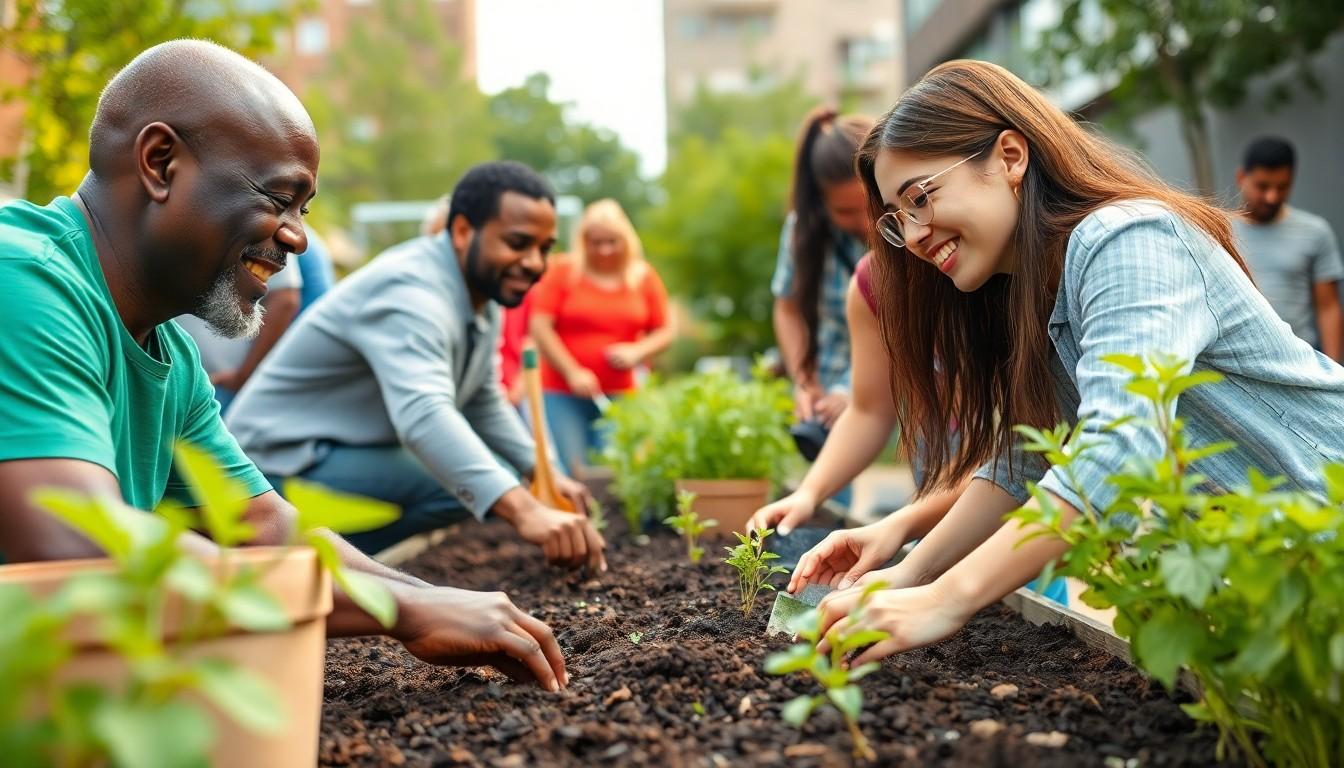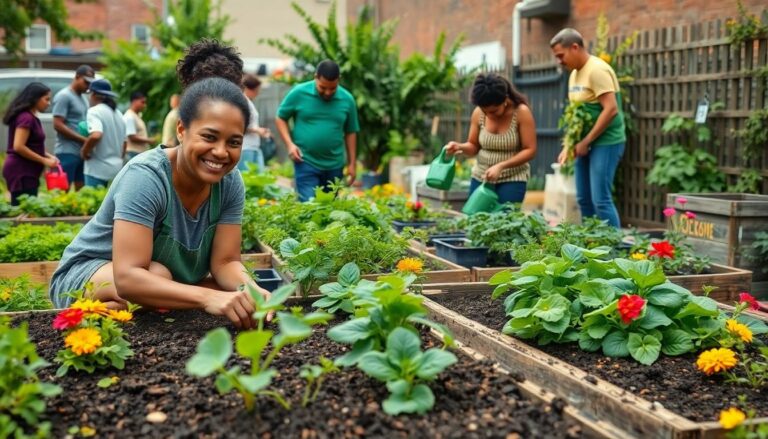In a world where plastic bags seem to multiply like rabbits and climate change feels like an unwelcome houseguest, the concept of a sustainable living lab is a breath of fresh air. Picture this: a space where eco-warriors gather to experiment with green technologies, innovative practices, and a sprinkle of creativity. It’s not just about saving the planet; it’s about having fun while doing it!
Sustainable Living Lab
Sustainable living labs serve as innovative environments for collaboration and experimentation. They focus on sustainable practices, renewable energy, and waste reduction methods. Participants engage in hands-on projects that promote eco-friendly technologies. Community involvement is a crucial aspect, fostering synergy among diverse groups.
Labs facilitate knowledge sharing in various fields, including agriculture, energy, and waste management. Workshops and events often feature experts who present solutions for everyday challenges. Individuals can test new concepts while evaluating their impact on the environment.
Sustainable living labs often prioritize community gardens. These gardens encourage local food production, reducing reliance on transportation and packaging. Additionally, many labs leverage technology to monitor resource consumption and enhance efficiency. For example, smart sensors can track water usage and energy consumption in real-time.
Results from these labs typically include successful prototypes that can scale to wider applications. Networking opportunities arise through partnerships with local businesses and organizations. Each lab’s focus may differ, yet the overarching goal remains the same: fostering sustainable behaviors in everyday life.
Data gathered from these experiments often informs policy-making. Governments recognize the importance of sustainability solutions generated at these labs. Thus, sustainable living labs provide a platform for real-world testing, leading to broader acceptance of innovative ideas.
Key Principles of Sustainable Living Labs

Sustainable living labs center on collaboration, innovation, and community involvement. They emphasize shared goals, promoting sustainability while connecting individuals.
Community Engagement
Community involvement drives the success of sustainable living labs. Participants often engage in collective activities, such as workshops and projects that highlight eco-friendly practices. Local stakeholders contribute insights and expertise that inform lab initiatives. Facilitating connections among diverse groups fosters a sense of ownership and responsibility toward environmental issues. Farmers, educators, and activists regularly collaborate, sharing resources and knowledge. Events held across various formats create dialogues on sustainability, encouraging broader participation. Successful community gardens exemplify this engagement, allowing residents to grow food while learning about sustainable agriculture. Such initiatives strengthen community bonds while promoting local ecosystems.
Research and Innovation
Research and innovation play pivotal roles in sustainable living labs. These spaces encourage experimentation with green technologies and sustainable practices. Participants develop prototypes that reduce waste and enhance renewable energy use. Engaging with local universities often provides access to cutting-edge research and expertise. Workshops led by specialists share valuable knowledge on innovative solutions for everyday challenges. Gathering data from experiments offers insights into effective sustainability strategies. Labs may also implement smart technology to monitor resource usage. Research findings frequently inform local policies, paving the way for widespread adoption of sustainable practices.
Examples of Successful Sustainable Living Labs
Various sustainable living labs showcase innovative practices aimed at promoting eco-consciousness and fostering community engagement. These examples illustrate the effectiveness of sustainable initiatives in real-world applications.
Case Study: Urban Sustainability Lab
Urban Sustainability Lab operates in city centers, focusing on reducing urban carbon footprints. This lab engages professionals, residents, and students in projects that highlight renewable energy solutions and waste management strategies. Participants install green roofs and develop community energy projects, demonstrating local scalable solutions. Collaboration with city officials helps integrate findings into urban planning policies, making sustainability a priority. Workshops on sustainable transportation options empower individuals to make environmentally friendly choices in their daily commutes.
Case Study: Eco-Village Initiative
Eco-Village Initiative represents a pioneering collective committed to sustainable living. Located in rural areas, the initiative focuses on building resilient communities through shared resources and permaculture practices. Residents engage in collaborative gardening, produce organic foods, and utilize renewable energy, showcasing diverse sustainable practices. This lab emphasizes workshops centered on sustainable construction methods and water conservation techniques. Community events promote local commerce, helping to strengthen economic ties while reducing environmental impact. Each resident’s commitment fosters a culture of sustainability, creating a model for future developments.
Benefits of Implementing a Sustainable Living Lab
Implementing a sustainable living lab offers numerous advantages for communities and individuals. Participants in these labs gain firsthand experience with sustainable practices that improve their daily lives. Enhanced collaboration occurs among diverse groups, fostering a strong sense of community and teamwork.
Resource efficiency increases as labs promote innovative solutions for reducing waste and optimizing energy usage. Hands-on projects encourage individuals to explore new technologies that lead to more sustainable outcomes. Workshops led by experts provide valuable insights that empower participants to tackle local environmental challenges effectively.
Community gardens establish local food production systems, cutting down on transportation emissions. Engaging in gardening teaches participants about sustainable agriculture while promoting healthy eating habits. Technology helps monitor resource consumption, offering real-time data that informs decision-making and drives efficiency.
Networking opportunities arise through partnerships with local businesses and organizations. These alliances can lead to significant improvements in community engagement and shared goals. Research conducted within labs influences policy-making, creating a roadmap for broader acceptance of sustainable practices.
Data collected from experiments supports the development of successful prototypes, which can be scaled for wider applications. Local stakeholders contribute expertise and insights, enhancing the overall impact of labs. Engaging individuals in collective activities reinforces their commitment to eco-friendly practices, creating a culture of sustainability.
Ultimately, the benefits of implementing a sustainable living lab extend beyond individual participants, influencing entire communities toward more responsible environmental behaviors.
Challenges and Limitations
Sustainable living labs face several challenges that can hinder their effectiveness. Resource limitations often pose significant obstacles, including funding constraints and insufficient access to materials. Community participation varies, and lower engagement can impact the collaborative spirit essential for success. The diverse backgrounds of participants sometimes result in conflicting priorities, complicating consensus on sustainable practices.
Technological integration remains a hurdle as well. Participants may encounter difficulties adapting to new tools meant to enhance efficiency. Workshops that focus on innovative practices may struggle if attendees lack prior knowledge or experience. The need for continuous education on emerging green technologies also presents a barrier, especially for those not actively involved in sustainability.
Sustainability measurements can be inconsistent across different labs. Establishing standard metrics that accurately reflect progress and impact on environmental goals is challenging. Moreover, data collection may not always be exhaustive, potentially limiting comprehensive analysis of lab outcomes.
Partnership dynamics also influence lab operations. Establishing and maintaining relationships with local businesses and organizations is crucial but can be difficult. Stakeholders may have differing motivations, leading to challenges in collaboration.
Additionally, scalability of successful prototypes can fall short. Not all innovations developed in labs are practical for broader implementation, which can limit their overall impact on sustainability. As a result, sustainable living labs must navigate these challenges carefully while striving to achieve their goals.
Overcoming Challenges
Sustainable living labs represent a vital step toward a greener future. By fostering collaboration and innovation within communities, they empower individuals to tackle environmental challenges head-on. These labs not only promote eco-friendly practices but also create a sense of ownership among participants.
Despite facing obstacles like resource limitations and varying levels of community engagement, the potential for positive impact remains significant. Successful examples demonstrate that when diverse groups come together, they can develop scalable solutions that benefit both the environment and society.
As awareness of sustainability grows, these labs will play an essential role in shaping eco-conscious behaviors and informing policy. The journey toward a sustainable future is ongoing, and sustainable living labs are at the forefront of this important movement.




